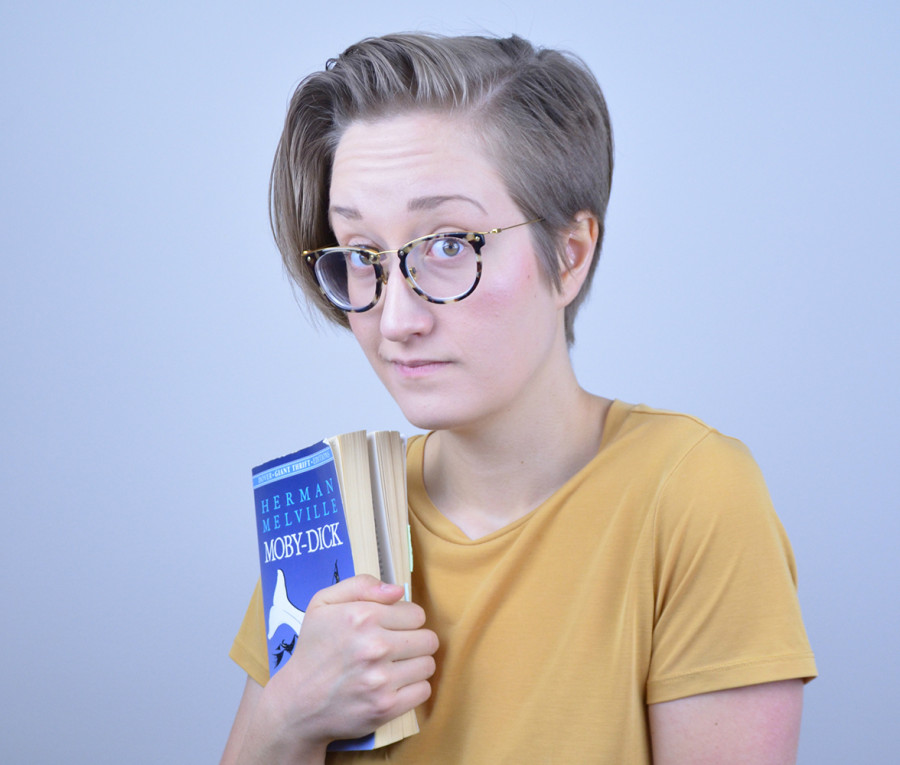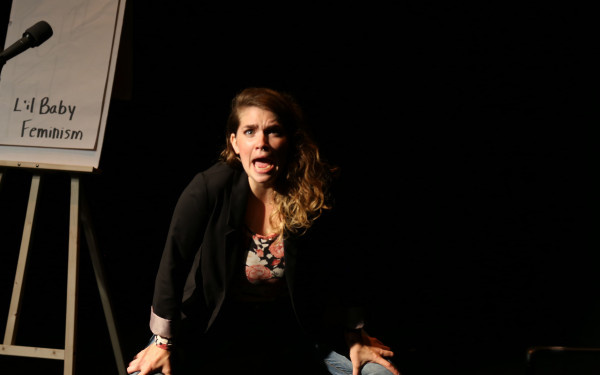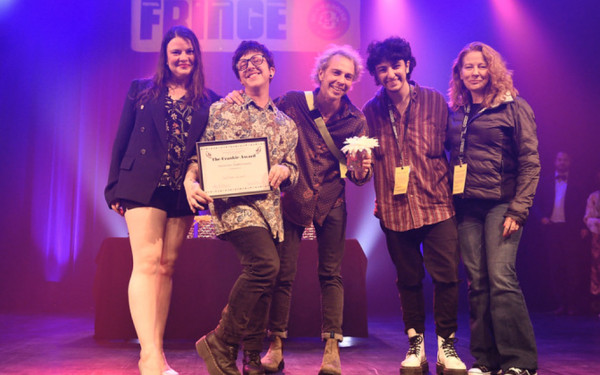Queer Romance Is At the Heart of Fringe Play ‘Exits’
Concordia Students and Alumni Put on the Coming of Age Story
Ella Kohlmann began the writing process of Exits at 17. Now, four years later, she starred in the play she wished she could have seen as a teenager.
“I remember around the time,” she said, “reading a lot of plays, and I was really disappointed by the lack—there’s nothing about young, queer women. Why?”
“I’m a young queer woman, I know many interesting young queer women,” said the playwright. “I’d love for there to be plays about us. And I was like, ‘I guess I should write one.’”
The story of Exits is sweet and real, showing a balanced picture of the complications and exhilarations of young, queer romance. Scenes unfolded mirroring Mody Dick, a book that is central to the play—themes of loneliness and discovery resonated.
As the play began, the audience found Rachel and Sam, played respectively by Kohlmann and Kate Hammer, on an almost empty stage. After running away from home, Rachel stumbled upon an alley and met Sam, who was spray painting.
The few props, costumes, and decor elements spoke loudly when it came to representing memory—an important part of the play—on stage. As she got to know Sam, Rachel revisited the memory of a party that happened a few days earlier.
“When you’re recounting a memory, you don’t see all the details,” said director Madie Jolliffe. “But there are certain details that stand out to you, and that’s why some of the props and costumes were primary colours.”
Jolliffe said that the props were suggestive, like the cigarettes Sam offered Rachel, which were crayons painted in primary colours. She added that memories happen in different places, spatially.
“That’s why the alley was one place on the stage, and the party was a different space on the stage, and the bus stop was another place.”
While the play explored the memory of the party where Rachel struggled to tell Leah she had a crush on her, the presence of Rachel’s younger self haunted her.
“Young Rachel and Rachel floated through the space, because they existed through the memories,” Jolliffe explained.
“I’m a young queer woman, I know many interesting young queer women. I’d love for there to be plays about us. And I was like, ‘I guess I should write one.’” —Ella Kohlmann
Young Rachel, played by Oli Hausknost, was Rachel’s 11-year-old self, and appeared at key moments of the play. Young Rachel challenged and talked to her present-time self, seemingly trying to make her come to a realization.
“Oli is very, very intelligent,” said Jolliffe. “Already at the start of rehearsal they had thought about all the lines and scenes, and Young Rachel’s relationship with Rachel, and they already started picking up on nuances.”
Some of the most tender moments happened between Young Rachel and Rachel, as they together figured out things that were left unsaid in the play, but made understood by their performances.
“It was mainly getting Oli and Ella to look like they were the same person, like the mannerisms, and [the ones] Rachel would’ve grown out of by the time they became 17, and the things they held onto.”
The play shows the complexities of young adult romance, and the beauty and subtleties of crushes. But Exits goes further than that—both the writing and Kohlmann’s performance access how transformative and beautiful queer love can be.
Leah and Sam, both of Rachel’s crushes, were played by Hammer.
“Ella wrote it into the script that both should be played by one person. Sam reminds her of Leah and that’s why we get access to those memories.”
Exits made its way to the MainLine’s stage with the help of the Concordia Association of Students in Theatre. Kohlmann explained that to support student work, CAST secured a spot at the Fringe. Exits was the chosen project, and got to be produced at the Fringe.


_600_832_s.png)




